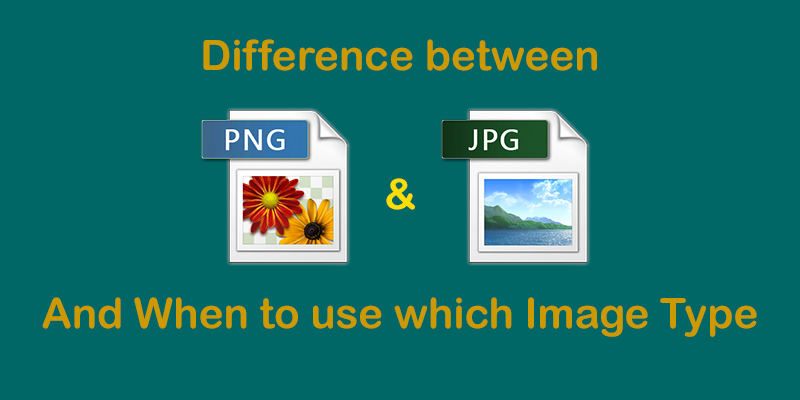What’s the difference between JPEG and PNG? Do you know when to use which image type? Most of the people who use images don’t really know the difference between JPEG and PNG in terms of usage. To start with the basics, JPEG stands for Joint Photographic Experts Group, and PNG stands for Portable Network Graphic. It may be clear from the full forms only when to use which image type, but there are still some differences between JPEG and PNG.
JPEG images are considered industry standard in various fields, such as digital photography to some extent, as this is the most common format saved by modern digital cameras and smart phones. The good thing about JPEG images is that they can be made small in size, or large in size depending upon the quality parameters that we specify for our image. Another thing about JPEG is that it is a lossy compression technique, which loses some image information upon saving.
PNG images are those graphics that you’ll see on most websites these days. It is because they allow for a transparent background, which JPEG does not support. PNGs can also be in different qualities, depending upon their nature of use. PNG-24 and PNG-8 are the two most commonly used formats for PNG files.
Difference between JPEG and PNG
The differences between JPEG and PNG tell us a lot about when to use which image format, and when to avoid which image format.
Choose JPEG over PNG if:
- Your image does not have a transparent background
- Your image represents a photographic scenario
- Your image does not contain much detailed artwork
Choose PNG over JPEG if:
- You require a transparent background to your image
- The image contains text mainly
- You require the image to portray non-lossy image quality.
When to use JPEG or PNG images in Web Development?
The main differences between JPEG and PNG have been covered in the last section, but what do these differences mean for Web Developers? When you develop websites, you need to make sure that your website loads quickly as it is one of the important ranking factor in Google search results as per the latest trend.
So now, in order to have the best loading time, you will need to optimize your website images, and one of the most important role in this is played by the image format that you choose for your image. Let me list out few scenarios where which format is to be used.
- Your website logo – Preferred in PNG, mainly because it is small in size, and is required in a high quality with a transparent background in most cases.
- Icons used on the website – Preferred in PNG, mainly because these icons will again be small in size, and would require a transparent background most of the times.
- Other miscellaneous images – Preferred in JPEG, because these images would generally be the images that are taken with some digital camera.
- Images containing text over any background – Preferred in PNG, because the file size created by a PNG image is less than that of a JPEG in such scenario(as seen in the image above!).
While you’re at it, you might want to read the following articles that will add something to your knowledge.
- Why developers need to learn the use of Photoshop TODAY!
- Simple things to do to reduce your page loading time
- Compress CSS files to save on space and the page size for better ranking
Apart from these differences, there may be other differences as well, but the main reasons to pay attention to are the ones that I’ve listed above. Do let me know in the comments section below about any other scenario where you prefer using JPEG or PNG images on a website. I’ll be happy to include them the article. Follow Slash Coding on Facebook, Twitter and Google+ to stay connected with us and never miss any important update from us.
